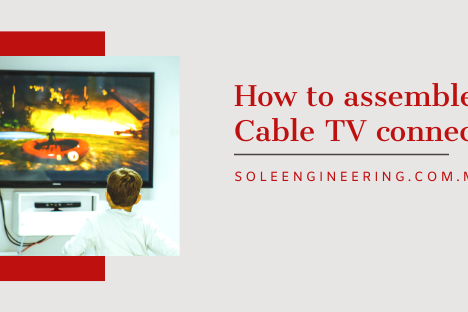If you do not want to spend money on hiring a professional service provider for installing your cable TV connection and wish to spend a fun evening figuring your way out on an interesting project, we are here to help. Understanding what different types of coaxial cables and connectors are available is important when specifying or purchasing the coaxial cable assemblies for a project.
This project is relatively easy and can be complicated in two simple steps of setting up the cable route and establishing the cable connection with the device. It is really not that complicated and the entire project can easily be completed in a matter of an hour if you have the right equipment available.
Things you will need
You will require:
- A modem
- A splitter (optional)
- A coaxial cable of the right type and length
- Cable staples
- Fish tape
- A cable cutter/stripper or a knife
- Hammer and nails
- A coaxial cable connector
- And of course a TV set
Type and length of the cable
Most projects work with RF Coaxial cable, here is everything you need to know about them. This project will require a specific type of RF coaxial cable which is standard RG6. These cables are also used for cable televisions, read here how the assembly works. Here is a guide about things to consider before purchasing the cable, do give it a read. Analyze the map for cable wiring for the foot traffic and decide on the path with the least complications. Measure around the area you will need to cover and add some extra inches for avoiding the tension upon installation by allowing flexible bending and twisting.
Purchasing the right cable connector
There is a variety of coaxial connectors available in the market when you go shopping you should know what exactly you are looking for. Such assemblies use F-connectors as a standard because typical RF plugs are male with threads inside of the shell and typical RF jacks are female with threads outside of the shell. The three variations of F-connectors are the slip-on connector, crimp type connector, and twist-on-connector, which will impact the process of installation of the connector. It is also important to keep in mind the size of the connector and cable needs to be compatible for them to establish a secure connection.
The cable splitter
You can use a cable splitter if you want to give the connection to more than one device. It is a simple process and will not compromise the quality of signal transmission if you have a good quality connection service provider.
Step 1: Setting up the cable Route
Connect the cable to the drop, ground the cable, and run it through the house. Forcing the wire, applying pressure n it, bending or crimping it can damage the wire. Use fish tape to pull the wire through the walls without damaging it. Use cable stables to secure the wire at uneven intervals to minimize and signal distortion. Remember to fill in any holes you drill into the walls create the path for the wiring.
Note: Running coaxial cables too close to electrical wires will cause interference, avoid this as much as possible.
Step 2: Connecting the cable with the Device
Depending upon the type of F-connector you are using the process of installing the connector will vary slightly. If you are interested in learning how to install an F-connector step by step, click here. After installing the connector at the end of the cable, simply plug in the wire into the TV device.







